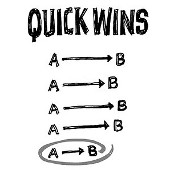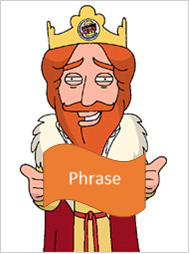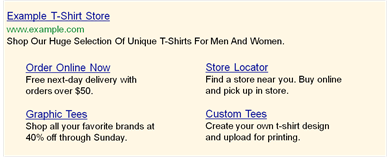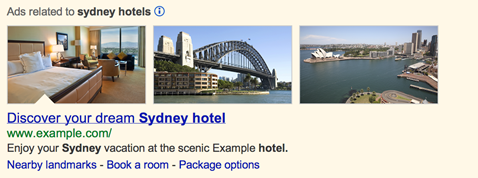When you first launch an AdWords account, there is so much optimization to do. Realistically you could spend hours a day analyzing data and making changes that will have a dramatic impact on your account based upon the analysis you have done. As time goes on and you have moved into an optimization routine, dramatic optimization becomes harder to do. However with the continuous improvements and changes to AdWords in 2013, account managers should revisit their accounts and see if there is opportunity for quick wins. I have listed below 5 quick wins every account manager should be utilizing on their established campaigns.
1) Dynamic Search Ads (DSA’s)
Dynamic search ads allow you to launch a campaign based upon your website content rather than keywords, the headline to your advert is then dynamically created based upon the search query to ensure maximum relevancy. Most existing search accounts will have pretty extensive keyword lists already built out, however you should think of this as a fresh pair of eyes on your account, as DSA’s will enable you to see what other relevant traffic there is out there. During Google’s pilot existing advertisers saw 5-10% more clicks and conversions when they added a DSA campaign to their AdWords accounts. This is really easy to set up and is an easy way of increasing your account exposure. When you do set these up I recommend ensuring you exclude certain pages from being scanned, for example terms and conditions, about us, delivery etc. otherwise you can end up appearing on some random search queries.
2) Match Type Experiments
Every search advertiser has certain match types they tend to use or favor over others, the important thing is to ensure you are utilizing the best match types for your campaign. Personally, my mantra is that phrase match is king.
However this isn’t to say that other match types don’t have their place. I recommend adding high performing keywords in exact match, if you look at the search query reports you will tend to find that your exact match keyword has a different cost per click to what you are paying overall for the phrase match variant of that term. Therefore to ensure efficiency it makes sense to separate this out so you can have a different bidding strategy for both phrase and exact match keywords.
The other match type I would recommend utilizing is modified broad match. This enables you to increase the exposure of keywords in a controlled way. I recommend adding terms that are either performing well for you, or that you would like to gain additional traffic from, in modified broad match. It is important that you continue to go through the search query reports regularly when you have added this and manually add positive keyword variations into your campaign.
3) Expanding Keywords
Both of my suggestions above should help you with my 3rd quick win – try new keywords! I recommend revisiting your website content and seeing if there are any additional areas you haven’t currently got coverage of in your paid search campaign. If you feel you are too close to it, it could be an idea to get a colleague to do this from a fresh perspective. Building out new keywords can inject new life into an old campaign and can provide you with a wider net to capture potential leads or purchases.
If you are worried about trialling new keywords due to potential budget increases, a clever way of doing this could be by utilizing an RLSA (remarketing list for search ads) campaign. RLSA works by focusing on the audience as well as the keyword. One idea could be to create a campaign with new generic keywords in it, then change your settings so your ads will only show to people in the audience you specify when they search for one of your keywords. This means that you are bidding for your ads to appear for the new terms, when people who have historically been to your site are searching.
For example, if you advertise on the normal search network on designer terms such as designer menswear, but you want to try advertising on just “menswear” but are worried about the potential volume of traffic. You could add “menswear” to your RLSA campaign, and only advertise on “menswear” to people who have previously been to your site when they are searching for “menswear” on google. If this is successful for existing visitors, this could then give you more confidence in advertising on this term in general.
4) Ad Extensions
Every AdWords campaign should be taking advantage of ad extensions as these have a positive impact of click-through rate. If you aren’t taken full advantage of the ad extensions currently on offer, this is a quick win to improve your click-through rate and increase your dominance on the search results page. I am just going to focus on 2 types of extensions I think you should be utilizing – sitelinks and image extensions. Most search accounts have sitelinks set up, however a lot of these aren’t taking advantage of the enhanced sitelink features – it is important to make sure you are utilizing the description functionality as this allows you to have 4 additional adverts on the page and completely dominate the search results page.
Secondly, I recommend taking advantage of image extensions. As soon as they are available for everyone you should jump on the bandwagon. Image extensions allow you to show an image of your product or service which will accompany your ad, making it stand out on the page and showing off your offering whilst pre qualifying and encouraging clicks:
5) Bid Multipliers
With the move to enhanced campaigns Google have enabled us to optimize at a more granular level than cost per click at keyword level. There are huge opportunities to refine the pool of searchers we show our ads too, ensuring we are only targeting people who we think have a good chance of being interested in our products or services. Every account manager should be utilizing all the bid multiplier functionality as we can now set bid multipliers based on device, audience, location and time of day.
Device: You should analyze performance by device and adjust your mobile bid dependent on performance. It is really important to look at varying time periods. For example I have noticed in a couple of my accounts that mobile performance is really high during sale period, therefore it is crucial I increase my bid adjustments when I launch the January sales as I want to maximize revenue through this source.
Location: I recommend visiting the dimensions tab and look at how individual cities or areas perform for you, in my experience to date, the cities that have the highest conversion rates are areas you didn’t expect! You can then add these separately and increase bids to improve your impression share in these areas.
Audience: I recommend adding anyone that has visited your site previously as an audience, you can then increase bids for people that have been to your site before as you know they have interacted with your site previously. If you wanted to be even more targeted you could do this for the people that have purchased, as if they have purchased from you before and are searching, there is a good chance they will be interested in your brand.
Time of day: There are 2 pieces of analysis that are worth doing here. 1) Looking at what times of day/day of week your conversion rate is highest. You could increase your bids during this period. 2) Looking at when our ad position drops, if you notice that you are in position 2 all day apart from lunchtime when you are in 3, it could be worth adding a bid multiplier to increase your position as you are being outbid at a key time.
With all of these multipliers it is important that you regularly assess their performance and adjust them accordingly.







